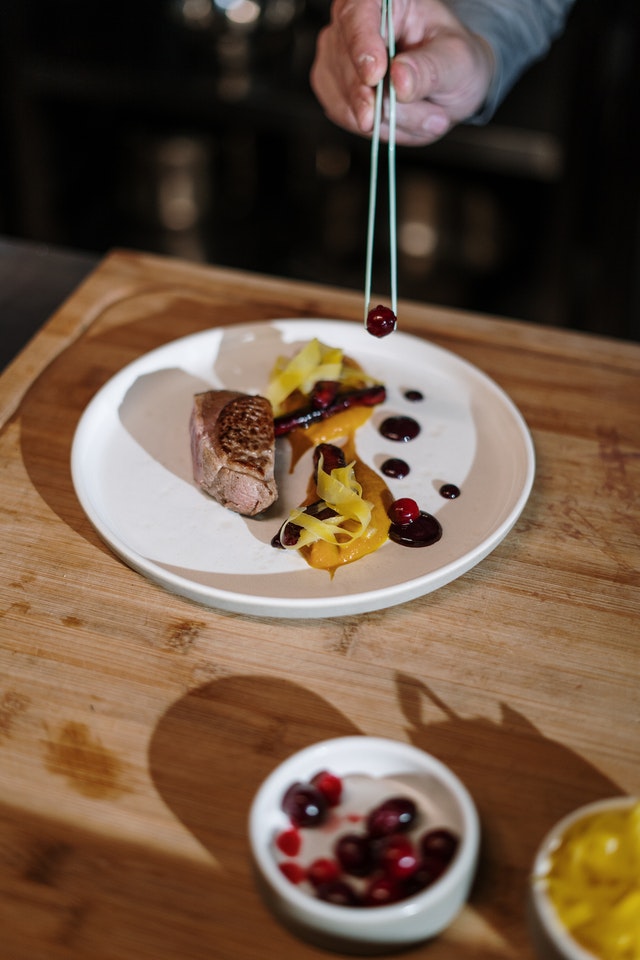
For a long time, steaks have been the most attractive and favorite dish by gourmets, especially those who are beef lovers. This is a delicious, nutritious dish with attractive flavors and irresistible side dishes, even if you are a fastidious customer. Currently, there are many restaurants serving high-class beefsteak. To learn more about the most famous and popular steaks in the world, let’s explore with Hanayafm right through this blog.
Rump Steaks
Rump Steak is one of the most affordable cuts of meat for a steak. Rump is very lean, soft, and is one of the most flavorful cuts of beef, and has fat mixed in with the grain. So, when making Rump Steak, the best doneness is Medium-rare. The good point is that this part has a large version, is relatively soft, and has a typical beef flavor.
Strip Steaks (New York steak)
Strip Steak, also known as New York Steak, is a tenderloin with fat on the outside. Many people are afraid of this fat, but you can rest assured because the fat border of the Strip Steak makes the loin softer. Especially, the New York Steak fat is not greasy and has as much cholesterol as pork. Strip steaks can be said to be the most famous and popular steak for the first choice of steak lovers.
Filet Mignon
The Filet Mignon is the tenderest, most delicious part of beef. This meat is located near the end of the short loin. The Filet Mignon has a tenderness that other cuts of beef cannot compare to it., with a rich flavor and nutrients. The reason why Filet Mignon is expensive is that this part of beef is not much on each beef ( about 2-2.5Kg/tenderloin). Filet Mignon is especially suitable for Steak dishes (sautéd or baked) because of its soft, round, and very sweet features.
Ribeye Steaks (Scotch Fillet)
Ribeye Steaks, also known as Scotch Fillet, is the meat on the side of the beef. The reason it is called “eye” is because there are two fat eyes in the middle of the loin. Ribeye Steak is the meat that makes legendary, loved by many people because of its rich, naturally sweet taste, mixed with spices. This part of meat extends from the back down to the abdomen, is the toned muscle of the cow. This part of the meat is very tender, mostly lean meat fibers interwoven without tendons.
T-bone Steaks (T-rib)
T-Bone Steak, also known as T-rib, is located between the sirloin and the tenderloin; there is a T-shaped bone in the middle of the meat. T-bone is one of the most popular Australian BBQ dishes. T-Bone rib Steak is a slice of very special flavor beef because it is very few in the cow. T-bone is often used to prepare fine dishes because when filtering this beef, it does not break the bones. The muscle bond between bone and meat should not lose water but retain its firmness and taste.
Skirt Steaks
With the soft, crispy, and very sweet taste, this is the most delicious part of the belly. This textured skirt steak features a diagonal tile arrangement. The lean meat tissues are linked in the form of bundles, stacked between layers of the fatty belly.
When cooking this type of steak, it should only be grilled to medium-rare to get the best skirt steak.
Hanger Steaks
Even the name says it all. Hanger is the meat that connects the loin and the rib, right next to the last rib. Sometimes, Hanger is confused with Skirt; however, Hanger is sweeter and beefier than Skirt. Hanger Steak is commonly used in Mexican cuisine. Hanger Steak is best when marinated with vinegar, orange or tangerine, and cooked over high heat with moderate doneness.
Flank Steaks
This is the meat encrusted on the side with the bucket cow, and beef encrusted. Flank Steak has a darker red color than other cuts of meat, with lots of lean meat interspersed with crispy tendons. Whether sautéed or grilled, Flank Steak should be cooked over high heat to medium done so it’s not chewy.
Tri-Tip
Tri-Tip is the meat cut from the bottom sirloin. The cut looks like a triangle, so it is called the Tri-tip. It has a lot of lean mixed with fat. However, due to the shape of the Tri-tip, it will be difficult to measure the correct doneness when processing because the small part of the meat at the top will inevitably be overcooked. Tri-tip is suitable for baking. Cooks should use high heat and not overcook for the best texture and flavor.
